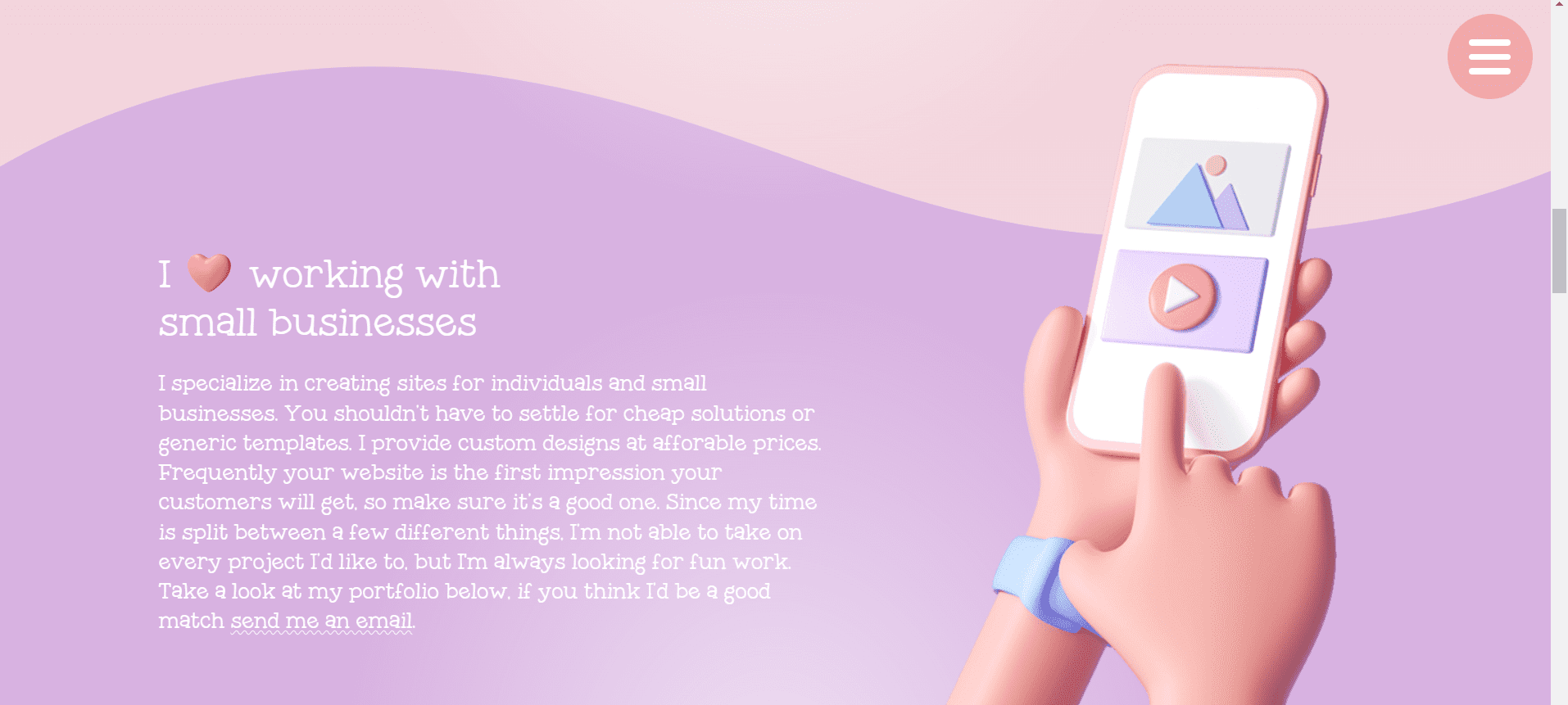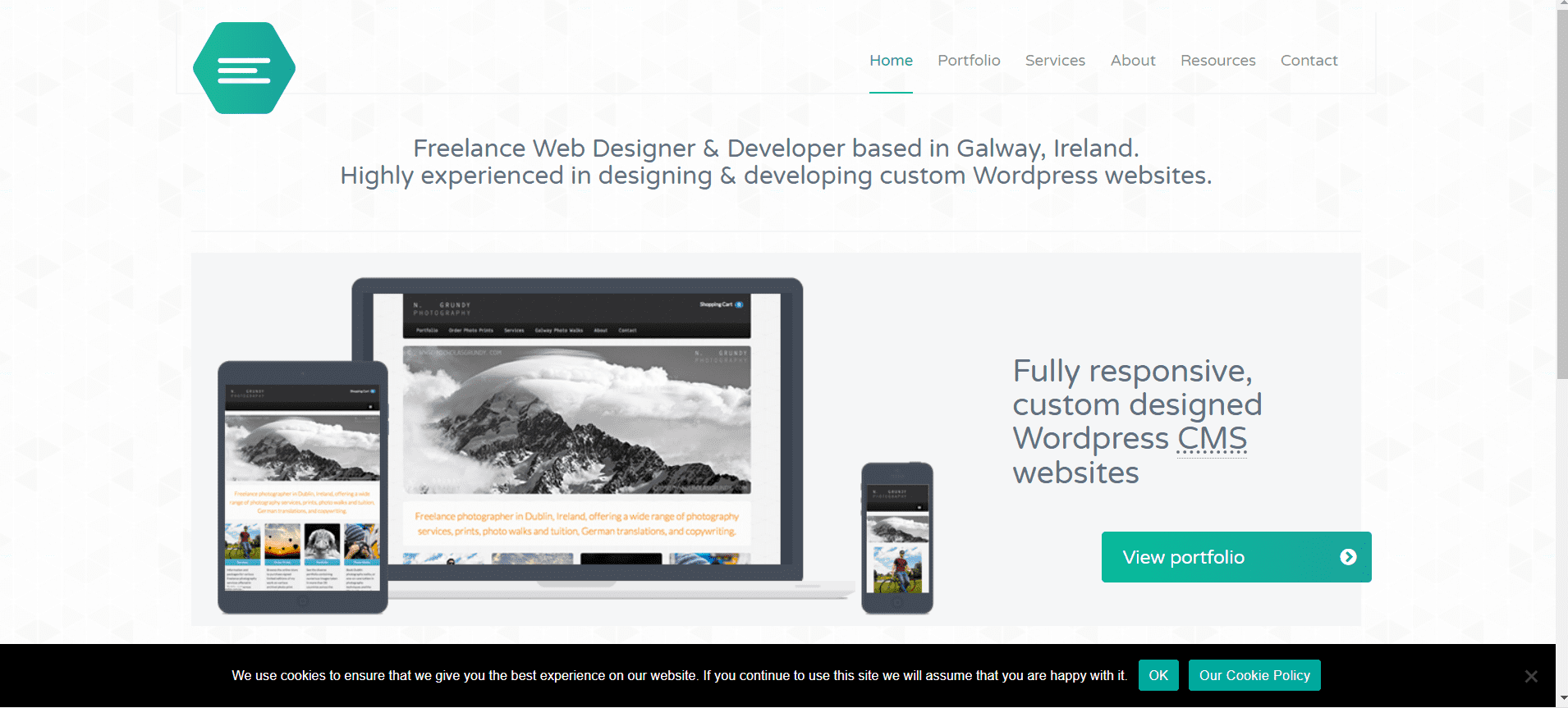The Ultimate Guide to Building a Coding Portfolio
Find the program that's right for you
Learn new skills quickly with a bootcamp, or earn a degree from a traditional college.
Answer a few questions to get matched with a bootcamp that fits your needs.
Explore accredited colleges to get matched with the best program for you.
- An impressive coding portfolio is essential for standing out against the competition.
- You can display your skills with personal, school, volunteer, or freelance projects.
- Make sure to tailor your projects to your desired role.
Coding professionals are in high demand. For example, the Bureau of Labor Statistics (BLS) projects software developer jobs to grow by 25% from 2021-2031. And the BLS projects jobs for data scientists to grow by 36% during the same time. These projections exceed the average 5% growth for all U.S. jobs.
However, despite the continued opportunities, employers still look for that all-important coding portfolio. This online resume showcases your capabilities and helps you stand out against the competition.
If you’re looking to land your first job in this exciting field, you may wonder how to develop a portfolio when you have little professional experience. Fortunately, you can display your knowledge and skills and differentiate yourself from others with projects you’ve done in school, as a volunteer, or just for your dream job.
Keep reading to explore what to include in your portfolio and how to showcase it to ensure you’re noticed.
What Is a Coding Portfolio?
Coding portfolios are online resumes for coding professionals that also contain examples of coding projects. Some professionals create personal websites to house their portfolios and demonstrate their coding ability to employers. Others use coding sites like GitHub to house their portfolio, taking advantage of the built-in network of employers who also use the site.
Coding portfolios contain relevant information for employers, including your formal education, professional certifications, and past work experience. You can also include screenshots and links to previous coding projects. Some coders add testimonials from former employers, co-workers, and professors about their work ethic and ability.
Featured Programming Bootcamps
Why Do You Need a Coding Portfolio?
Coding professionals across the industry, including data scientists, web developers, and software engineers, need coding portfolios. A coding portfolio is as essential to the job search process as a professional resume.
Many employers expect coding portfolios from candidates and may actively search for them during the hiring process.
Portfolios demonstrate how you think and how well you can code. Coding portfolios also provide insight into your creativity and attention to detail.
Coding employers want to see current work in a coding portfolio. You should frequently update your portfolio to demonstrate your passion for coding and your work ethic. Including multiple projects can also help you showcase your ability to solve various problems and work with different tools and coding languages.
What Should You Include in a Coding Portfolio?
Consider the following elements when creating your online profile.
Domain Name
When building a coding portfolio, carefully consider your domain name. A domain name is the address of a website that appears in the URL. You can purchase a domain name from a domain registrar for $10-$20 per year, though some domain registrars may offer deals.
A good domain name is memorable and reflects your professional brand. Employers may form a negative opinion solely based on an unprofessional domain name. Choose a name that relates to your work or professional name, and have a backup domain name in case your original idea is taken.
Design and Layout
Every piece of a portfolio website reflects the creator. Because coding portfolios function like resumes, you must ensure that every detail reflects your abilities as a developer. The design and layout of a coding portfolio can allow you to showcase your creativity and attention to detail.
Try to develop your portfolio with the user in mind. Good portfolios allow for easy navigation and readability. Think about unique designs that will help you stand out while remaining professional. Mistakes in design and layout can hurt you just as much as mistakes in your work samples.
“About Me” Section
Consider including an “About Me” section or page along with your resume and featured projects. An “About Me” section strikes a more personal tone than a resume. Rather than focusing solely on work experience, use your “About Me” page to let employers know a little about yourself.
For example, a strong “About Me” section might include a professional headshot, a short bio, values and professional strengths, and relevant personal experiences. “About Me” sections should help you create your brand, not distract from your professional talents.
Featured Projects
You must include projects in your portfolios. Employers expect and want to see coding portfolio projects to evaluate a developer’s work. If you recently graduated from college, you may include projects completed for class, such as a thesis project. A coding portfolio should contain 4-10 projects.
These projects should demonstrate your skills, letting potential employers and recruiters know that you can do what your resume suggests. For this reason, it’s important that your projects reflect the job you’re aiming for.
For example, if your goal is to work as a front-end web developer, include projects displaying your work on webpages. These can come from freelance work, class projects, personal or volunteer projects, and even projects in progress.
Make sure that you regularly update the projects you feature on your website. Regular updates show a strong work ethic. You should also choose projects that highlight the breadth and depth of your coding knowledge.
While some developers may put screenshots of their work on their website, try to include links to any webpages you’ve worked on. This allows potential employers to get a better look at your work.
Many coders include links to projects housed on GitHub or other development platforms. Professionals often use GitHub to show off current and ongoing projects, and public GitHub profiles allow potential employers to see code updates in real time.
It’s good to also add explanations of your role in each project, particularly for projects that involved a team. Offering an explanation also allows you to point out specific project details that you want employers to notice and explain how you approached the work.
Contact Information
Remember to provide contact information on your coding portfolio so potential employers can reach you. You should include an email address, and you may also want to list a phone number and social media accounts. Keep in mind that coding portfolios are public, so any form of contact, especially social media accounts, must remain presentable for potential employers.
What Are Employers Looking for in a Coding Portfolio?
No matter your chosen career in coding, there are a few key elements that employers and recruiters look for in a coding portfolio. As with most professions, they want to see a seamless timeline from when you started your journey to the present date. Make sure your latest project is fairly current, showing that you stay up to date in your field.
Recruiters also look for career development. They want to see advancements, whether you took on more challenging projects or job progression.
Even though accomplishments often account for more than credentials, recruiters also look at your educational background. Make sure to include any relevant education, whether that’s a college degree or certification from a coding bootcamp.
Employers also look for people who can use their technical knowledge to solve real-world problems. They may look at projects from a solutions standpoint, so make sure to highlight the challenges you faced and how you overcame them.
What Are Some Best Practices When Developing a Coding Portfolio?
When building your portfolio, remember that this is your marketing tool. It offers a chance to show off your technical prowess, that you’re up to date on current trends, and that you’re a creative genius with a great personality. Following best practices ensures you include these key aspects.
These best practices include tailoring your projects to your desired role. For instance, if your goal is a role as a back-end developer, include projects that showcase your knowledge in database technologies and server-side languages, like JavaScript and Python.
Another important practice is developing a portfolio that is mobile-first in design.
Showcasing your ability to prioritize websites for the mobile user is critical in today’s smartphone world.
In addition, ensure your digital first impression attracts attention by creating an appealing visual layout and design. This includes reducing touchpoints and creating a user interface that’s straightforward and easy to navigate.
What Mistakes Should You Avoid When Building a Coding Portfolio?
One of the crucial mistakes to avoid when you’re building a coding portfolio is copying other people’s work. For instance, if you worked on a project as a team, include that information in the project description section and highlight your role. And you should gear project descriptions toward nonprogrammers, showcasing your communication skills.
Along the same lines, remember to include your soft skills that tell a potential employer you’re a team player who can get along well with others. Recruiters also keep a watchful eye on skills like leadership, time management, and problem-solving that can’t always be taught. You can integrate these into your “About Me” section and show them in your portfolio.
You’ll also want to avoid an inconsistent timeline that shows gaps in your activity. Employers want to know you’re excited about your chosen profession and stay current on the quickly changing technology. Continue to develop your skills and demonstrate this passion in your portfolio.
What Tools Are Available to Help Create a Coding Portfolio?
Many online tools can help you create a professional and eye-catching coding portfolio. One of the most widely used is GitHub, an industry standard and an ideal place to host and maintain your portfolio. The web-based interface also allows you to network and collaborate with other professionals.
Dribbble, a popular online community for creatives, offers inspiration to help boost your portfolio. A look at coding portfolios offers innovative graphic elements, illustrations, and designs. You can also find many sites for registering your domain name. Some popular ones include Namecheap, GoDaddy, Bluehost, and Hover.
What Are Some Examples of a Strong Coding Portfolio?
Are you ready to create a coding portfolio that rivals the best? Take a look at these two prime examples for inspiration.

Denise Chandler’s web design and front-end web development portfolio demonstrates her creative side as a designer and her developer prowess. It’s easy to navigate and includes a neatly organized menu section with precise and compelling project descriptions.

Emily Ridge’s coding portfolio focuses on web design and development using WordPress. Her immediate display of a laptop, tablet, and smartphone screen illustrates her focus on custom, responsive website designs with a focus on mobile users. Her portfolio also has a diverse selection of projects, including event management and e-commerce platforms.
Frequently Asked Questions About Coding Portfolios
How many projects should be included in a coding portfolio?
A coding portfolio should include 4-10 coding projects. You should always choose projects that showcase your best work, even if that means showing fewer projects in your portfolio. And you should update your portfolio projects often to ensure they show your most current work to employers.
Is it more important for a junior or senior web developer to have a portfolio?
All coders should create and maintain a coding portfolio. Junior web developers can use the portfolio to network, attract potential employers, and demonstrate coding skills. Senior developers should continually update their portfolios as they work on projects to earn advancement opportunities at their current workplace or with a new employer.
Are there coding portfolio design templates to use as a starting point?
Yes. You can find coding portfolio design templates online to use as a starting point. Some websites charge a fee for these templates. You can also look on open-source platforms like GitHub for portfolio ideas. However, remember to try to make your portfolio unique to stand out to employers.
What are five things a great portfolio includes?
A great portfolio includes captivating projects that showcase your best work and align with the job you have in mind. The “About Me” page is also critical as it lets your personality and brand shine through.
In addition, include a short description of your career thus far, where you see it headed, and professional references. Show your professionalism with a contact form, social media channels, and links to your GitHub and LinkedIn profiles.
Explore More College Resources

How to Create an Online Portfolio
Building an online portfolio may be necessary to be competitive in today’s marketplace. Here’s how to create a solid one.

by Nikki Carter
Updated September 15, 2022

How to Create the Best GitHub Profile
Your GitHub profile connects you to other software programmers and showcases your work to future employers. Learn how to create a GitHub account, including picking a GitHub username.

by Nalea Ko
Updated January 17, 2023

